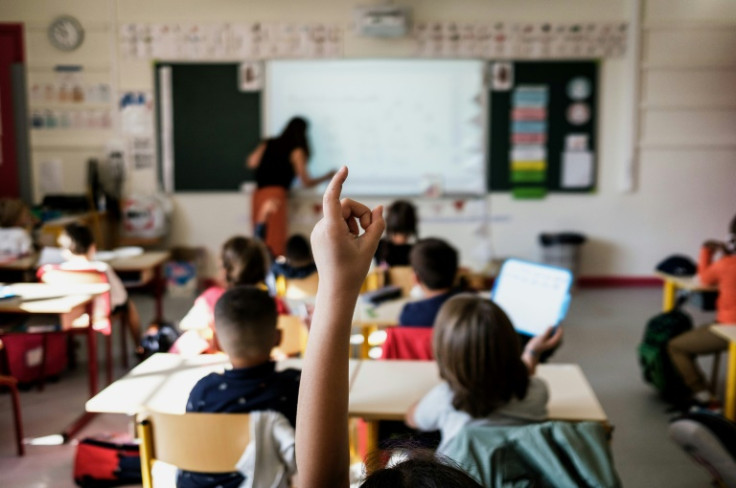US Students' Education At Risk As Teachers Quit At Alarming Rate; 550K Vacant Positions Need To Be Filled

KEY POINTS
- In most districts, teachers are tasked with creating an even more rigorous curriculum.
- Shortages are even more pronounced among high-needed subject areas such as math, science, special education, and bilingual education.
The education system in the United States is facing an unprecedented crisis as public school teachers leave the profession at an alarming rate, leading to severe shortages and putting students' education at significant risk. According to recent reports, there are currently over 550,000 vacant teaching positions across the country, a situation that experts warn could have long-lasting effects on student achievement and overall educational quality.
Mounting Challenges for Teachers
Teachers in the US are grappling with a range of challenges, from the lingering effects of COVID-19 learning loss to political battles over curriculum content. These challenges are compounded by mounting responsibilities and stagnant pay, creating an environment where educators feel increasingly overwhelmed and undervalued.
Evan Stone, co-founder of Educators for Excellence, a teacher-led organisation advocating for educational policy reform, has been tracking the exodus of teachers over the past seven years. He attributes the trend to what he describes as "an unsustainable set of conditions for them in the classroom." Stone emphasises that the situation has reached a tipping point where the profession's attractiveness is rapidly declining. "If you wouldn't recommend the profession that you're currently doing, it means your level of satisfaction is pretty low," he stated.
Alarming Statistics Highlight Teacher Dissatisfaction
The Pew Research Center recently released data that paints a grim picture of the current state of the teaching profession in the United States. According to the survey:
- 77% of public K-12 teachers say their job is frequently stressful.
- 68% report feeling overwhelmed by their responsibilities.
- 70% believe their school is understaffed.
- 52% would not advise a young person to pursue a teaching career today.
These statistics underscore the deep dissatisfaction among teachers, driven by growing responsibilities that have not been matched by adequate compensation or support.
Increasing Responsibilities and Insufficient Support
In many school districts, teachers are now expected to take on additional roles, including creating more rigorous curricula and monitoring student use of technology, such as mobile phones. These new demands come on top of existing challenges, such as managing classroom discipline, which has become increasingly difficult due to the disruption of routines during the pandemic.
Stone noted that while teachers support the implementation of a "higher quality curriculum," they are also calling for more coaching and support to help them meet these heightened expectations. Additionally, teachers are seeking assistance in managing classroom environments, particularly in keeping mobile phones out of the learning space. "Teachers don't want to become 'phone police' on top of their instructional duties," Stone remarked.
Shortages in High-Need Subject Areas
The teacher shortages are particularly acute in high-need subject areas such as mathematics, science, special education, and bilingual education. Stone explained that part of the difficulty in filling these roles stems from the lack of pay differentials between these more challenging positions and other teaching roles within the school system.
According to data, the national average starting salary for teachers is $38,617, with the average teacher salary in the US at $58,950. However, there is significant variation across states, with Montana offering the lowest starting salary at $30,036, while Washington, D.C., offers the highest at $51,359. New York boasts the highest average teacher salary at $79,637, whereas South Dakota has the lowest at $42,668.
Impact on Students and Education Quality
As the new school year begins, many schools are already feeling the impact of the teacher shortage. According to Teachers of Tomorrow, a study conducted in April estimated that there were 550,000 vacant teaching positions nationwide. This shortage of educators is leading to serious concerns about the quality of education that students will receive.
Experts warn that late hiring can have a detrimental effect on student achievement. A study by professors at Brown University titled "The Productivity Costs of Inefficient Hiring Practices: Evidence From Late Teacher Hiring" found that hiring teachers after the school year has started can reduce student achievement in subjects such as mathematics and reading.
Keri Rodrigues, president of the National Parents Union, highlighted the concerns of many parents, who worry that their children will be taught by a rotating cast of substitute teachers or given work packets in place of meaningful instruction. "We know that relationship building and having a solid relationship with a trusted adult helps our kids with so much, from being able to feel comfortable in the classroom to just impacting things like chronic absenteeism," Rodrigues explained.
She further noted that the absence of these trusted adults in the classroom could lead to increased anxiety among students. "It doesn't allow them to build that foundation of trust that they need to be able to open their minds and learn and grow," she said.
© Copyright IBTimes 2025. All rights reserved.






















